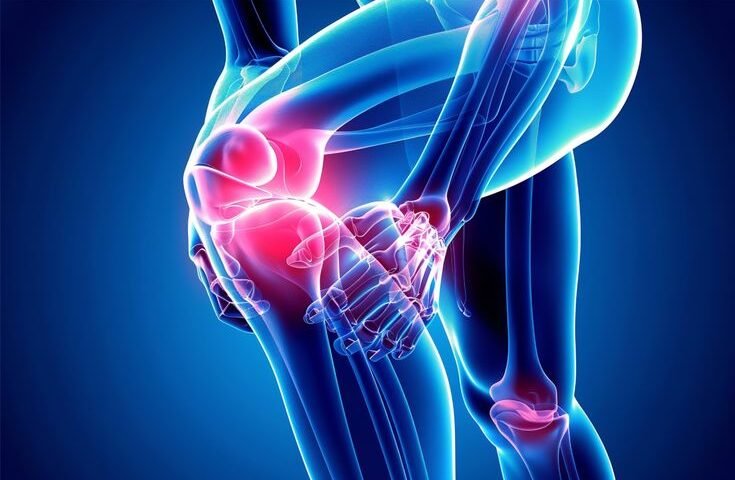Joint Health in Monsoon: Why Pain Worsens, Common Problems, and Tips

Common Dental Problems in Pediatric Dentistry
August 30, 2025Monsoon brings much-needed relief from the scorching heat, but for many people, especially those with arthritis or chronic joint conditions, the rains also bring discomfort. Sudden weather changes can trigger stiffness, swelling, and joint pain, leaving people wondering why their symptoms worsen when the skies turn grey. Understanding the connection between monsoon and joint health is essential to managing pain and staying active during this season.
Why Does Joint Pain Worsen in Monsoon?
Several factors contribute to increased joint discomfort during rainy days:
1. Drop in Barometric Pressure
When atmospheric pressure falls, tissues in the body may expand slightly. This puts pressure on already sensitive joints, making conditions like arthritis more painful.
2. Cold and Damp Weather
Moist and chilly weather can reduce blood circulation around muscles and joints, increasing stiffness. Those with a history of orthopedic problems may feel their joints tighten up.
3. Reduced Physical Activity
Rainy days often mean less outdoor activity. Reduced movement can weaken muscles and put extra stress on the joints, further contributing to stiffness.
4. Increased Inflammation
Weather changes can affect the body’s natural inflammatory response. For people with autoimmune conditions like rheumatoid arthritis, this can worsen flare-ups.
Common Joint Problems During Monsoon
While the season affects everyone differently, certain conditions are more frequently reported:
1. Arthritis Flare-Ups
Both osteoarthritis and rheumatoid arthritis patients commonly complain of aggravated pain during monsoon. Swelling and stiffness are also more pronounced.
2. Back and Spine Pain
Dampness in the air may worsen lower back pain, especially in those with spondylosis or disc-related issues.
3. Knee Pain
The knee joint is highly sensitive to weather fluctuations. Many people, especially the elderly, experience swelling, difficulty in bending, and pain while walking.
4. Gout and Other Inflammatory Conditions
Monsoon can trigger flare-ups of gout due to water retention and lifestyle changes.
5. Post-Injury Pain
Individuals who have had fractures or past joint injuries may experience heightened sensitivity in the affected areas during rains.
Practical Tips to Manage Joint Pain in Monsoon
The good news is that joint pain during monsoon can be managed effectively with simple lifestyle adjustments.
1. Stay Warm and Dry
- Wear warm clothing, especially around knees and shoulders.
- Avoid sitting in damp clothes after getting wet in the rain.
- Use heating pads or warm compresses to ease stiffness.
2. Keep Moving
- Gentle exercises like yoga, stretching, or indoor aerobics can keep joints flexible.
- Walking indoors for 20–30 minutes helps improve circulation.
- Avoid overexertion, but don’t become sedentary.
3. Follow a Joint-Friendly Diet
- Include omega-3-rich foods such as fish, walnuts, and flaxseeds to reduce inflammation.
- Add calcium and vitamin D sources like dairy, spinach, and fortified cereals for bone strength.
- Stay hydrated, even if the weather is cool, to prevent joint stiffness.
4. Manage Body Weight
Excess weight adds stress to weight-bearing joints like the knees and hips. Maintaining a healthy body weight can significantly reduce monsoon-related discomfort.
5. Maintain Proper Posture
Sitting for long periods in front of a computer can strain the back and neck. Use ergonomic chairs, keep your spine straight, and take breaks to stretch.
6. Warm Oil Massage
Gentle massage with warm mustard or sesame oil can relax muscles, improve circulation, and provide relief from stiffness.
7. Physiotherapy and Exercises
- Physiotherapy sessions can help manage chronic conditions with targeted exercises.
- Strengthening surrounding muscles reduces the load on affected joints.
8. Consult an Orthopedic Specialist
If pain is persistent or worsening, seeking professional advice is essential. Visiting an Orthopedic Hospital in Gurgaon can help you get accurate diagnosis, advanced treatments, and personalized exercise plans.
Natural Remedies That May Help
- Turmeric: Its curcumin content has anti-inflammatory properties that can ease joint pain.
- Ginger Tea: Known for reducing stiffness and improving mobility.
- Epsom Salt Bath: Soaking in warm water with Epsom salt can provide temporary relief.
When to See a Doctor
Do not ignore your symptoms if you experience:
- Severe swelling in joints
- Persistent pain that limits daily activities
- Sudden increase in stiffness or immobility
- Fever accompanied by joint pain (possible infection)
These could indicate a more serious condition requiring immediate attention.
Long-Term Prevention Strategies
- Regular Exercise: Weight training and swimming (in clean, indoor pools) strengthen muscles and improve joint health.
- Adequate Sunlight Exposure: Vitamin D from sunlight helps maintain bone strength.
- Routine Check-Ups: Monitoring joint conditions can prevent complications.
- Avoid Excess Moisture at Home: Use a dehumidifier or keep living spaces dry to reduce dampness-related issues.
Final Thoughts
While monsoon may worsen joint discomfort, proactive care can significantly reduce pain and improve quality of life. Maintaining an active lifestyle, following a nutritious diet, and seeking timely medical advice are key to healthier joints. If your symptoms interfere with daily life, consulting a specialist ensures you receive the right treatment and preventive strategies.



